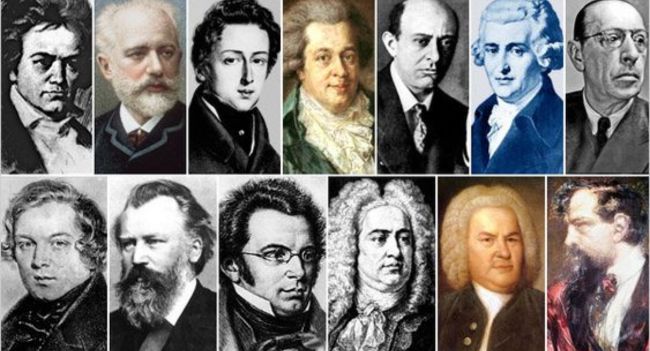Classical music era has a rich and captivating history that spans several centuries. One of the most significant periods in the development of classical music is the Classical Music Era. Lasting approximately from 1750 to 1820, this era witnessed profound changes in musical composition, style, and performance. In this article, we will delve into the Classical Music Era, exploring its distinct subgenres, highlighting notable compositions, and discussing the influential composers who shaped this period.
The Classical Music Era can be further divided into several distinctive subgenres that exhibit unique characteristics. These subgenres include:
Symphony
A symphony is a large-scale orchestral composition typically consisting of multiple movements. The symphony serves as a musical form that allows composers to explore various themes and moods throughout their movements. One of the most renowned symphonies from this era is Ludwig van Beethoven’s Symphony No. 5 in C minor, known for its powerful opening motif and dramatic structure.
Sonata
Sonatas during the Classical Music Era were primarily composed for solo instruments or small ensembles. These compositions often featured multiple movements and showcased the technical skills of the performer. An excellent example is Wolfgang Amadeus Mozart’s Piano Sonata No. 16 in C major, K. 545, commonly known as the “Sonata Facile” or “Easy Sonata,” reflecting its accessibility and melodic charm.
Concerto
Concertos provided a platform for showcasing the virtuosity of solo instruments, accompanied by an orchestra. These compositions featured a soloist engaging in a musical dialogue with the orchestra. One of the most famous concertos of the era is Ludwig van Beethoven‘s Piano Concerto No. 5 in E-flat major, Op. 73, also known as the “Emperor Concerto,” revered for its grandeur and technical demands.
Iconic Compositions from the Classical Music Era
The Classical Music Era produced numerous timeless compositions that continue to captivate audiences to this day. Some notable examples include:
Wolfgang Amadeus Mozart
Symphony No. 40 in G minor, K. 550: Mozart’s Symphony No. 40 is a masterpiece known for its emotional depth, rich harmonies, and melodic brilliance. The symphony showcases Mozart’s ability to blend grandeur and intimacy seamlessly.

Ludwig van Beethoven
Symphony No. 9 in D minor, Op. 125: Beethoven’s Ninth Symphony, also known as the “Choral Symphony,” is an iconic work that revolutionized the symphonic form. With its inclusion of a choir and vocal soloists in the final movement, Beethoven achieved a groundbreaking synthesis of instrumental and vocal music.
Franz Joseph Haydn
String Quartet No. 62 in C major, Op. 76, No. 3, “Emperor”: Haydn’s “Emperor” Quartet is a prime example of his mastery of the string quartet genre. The composition is characterized by its lyrical melodies, intricate counterpoint, and delightful interplay among the four instruments.
Influential Composers of the Classical Music Era
The Classical Music Era saw the emergence of brilliant composers who left an indelible mark on the musical landscape. Here are three influential composers from this period:
Wolfgang Amadeus Mozart (1756-1791)
Mozart, a prolific and prodigious composer, excelled in various forms, including symphonies, concertos, operas, and chamber music. His compositions epitomize the elegance, balance, and emotional depth associated with the Classical Music Era
Ludwig van Beethoven (1770-1827)
Beethoven is often regarded as the bridge between the Classical and Romantic periods. His groundbreaking compositions pushed the boundaries of musical expression and form. Beethoven’s symphonies, piano sonatas, and string quartets are considered monumental achievements that showcased his innovative spirit and emotional intensity.
Franz Joseph Haydn (1732-1809)
Haydn, known as the “Father of the Symphony” and “Father of the String Quartet,” played a pivotal role in the development of these genres. His compositions exemplify precision, wit, and inventive use of musical ideas. Haydn’s work laid the foundation for future composers and had a significant influence on Mozart and Beethoven.

Musical Characteristics of the Classical Music Era
The Classical Music Era is characterized by several distinctive musical features:
Balance and Symmetry
Compositions from this era exhibit a sense of balance and symmetry in their overall structure. Musical phrases and themes are often presented in a question-and-answer format, creating a sense of order and clarity.
Melodic Beauty
Classical melodies are known for their gracefulness, elegance, and memorable qualities. These melodies are often built upon clear-cut and symmetrical phrases, making them easily recognizable and enjoyable to the listener.
Homophonic Texture
The predominant texture in classical compositions is homophonic, meaning that there is a clear distinction between the melody and the accompanying harmony. This texture allows for a balanced interplay between different musical voices.
Clear Form and Structure
Classical compositions often adhere to specific forms, such as sonata form, minuet and trio, and rondo. These structured forms provide a framework for composers to develop their musical ideas and create cohesive compositions.
Conclusion
The Classical Music Era remains a cornerstone of Western classical music, with its timeless compositions and influential composers shaping the musical landscape for generations to come. From the symphonies of Mozart and Beethoven to the string quartets of Haydn, the Classical Music Era showcases a diverse range of subgenres and musical characteristics. Its balance, symmetry, and melodic beauty continue to captivate audiences worldwide. By delving into the Classical Music Era, we gain a deeper appreciation for the rich heritage and enduring legacy of classical music as a whole.
